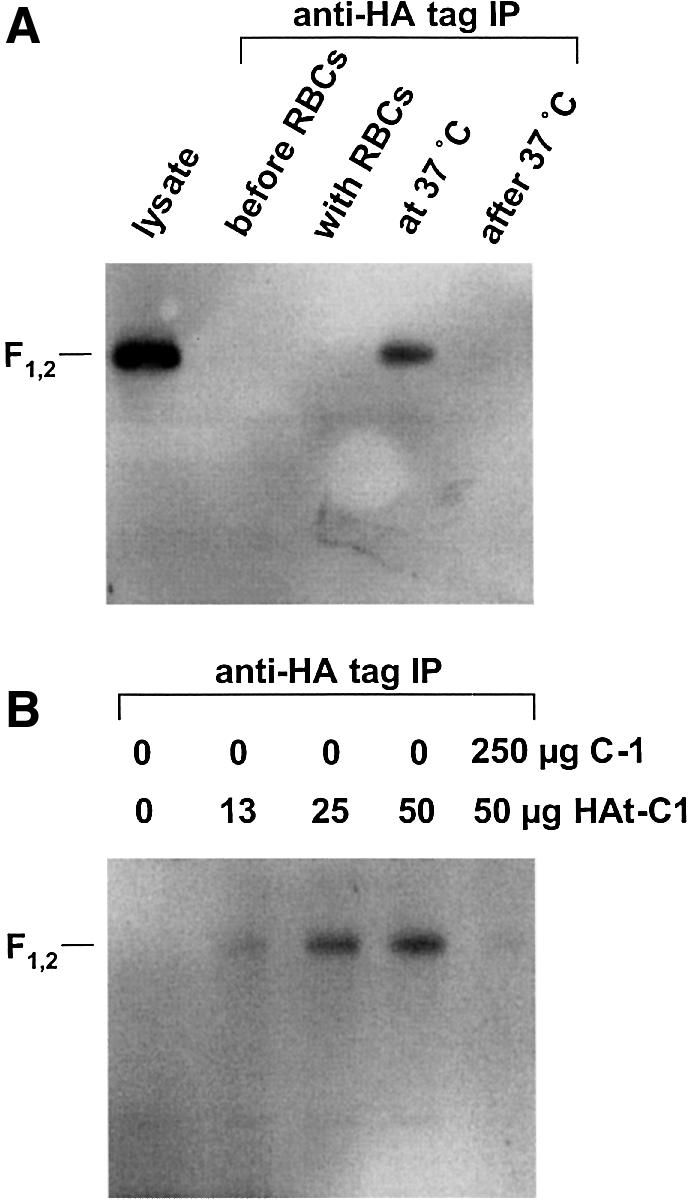
Fig. 6. HA-tagged C-1 peptide (HAt-C1) binds F under the same conditions that it inhibits cell–cell fusion. HAt-C1 inhibited fusion only when added to F-expressing cells bound to target cells during 37°C incubation (data not shown). (A) Lane 1, whole-cell lysate of Vero cells expressing SV5 W3A and HN. Lanes 2–5, immunoprecipitation with the HA tagged peptide HAt-C1. Intact Vero cells transiently expressing F and HN were incubated with human RBCs at 4°C, and the Vero–RBC complexes were subsequently warmed to 37°C. The HAt-C1 peptide was incubated with samples either before RBC incubation, during RBC incubation, during the 37°C incubation or after the 37°C incubation. The F protein was co-immunoprecipitated using the 12CA5 antibody against the HA tag on the peptide. The samples were electrophoresed under non-reducing conditions by SDS–PAGE and a western blot was performed using a rabbit polyclonal peptide antiserum against F2. (B) Binding of HAt-C1 to F is dose dependent and can be competed by an excess of untagged C-1 peptide.
